The Covid-19 pandemic is likely to have serious consequences for private museums. When we think of museums, we are usually accustomed to call to mind public institutions, but in Italy there is also a dense landscape of private museums, conducted with different management models than those in the public sector, and to which the coronavirus could cause serious damage in terms of resilience, probably even greater than to public museums. Of course, during these months, private museums have not stood idly by and have responded to the crisis with the paraphernalia that so many have unleashed to cope with the emergency: more pervasive communication, live streaming, an increased focus on online.
Of course, private museums, too, have had to adapt to the emergency situation, investing to equip themselves with the apparatus required for reopenings: sanitizing devices, constant sanitizing, spacing, and quotaed entrances. A considerable expense, if one considers that for private museums the problems of sustainability are always very pressing (and all the more so during a global pandemic), and even more urgent in these months in the face of results, in terms of audience return, that we all know and that have been amply certified by statistics (most recently, those of ICOM, which conducted an estimate on the reduction of post-Covid audiences in museums that have reopened). Add to this the fact that private museums (in this case exactly like the others) did important work during the summer to prepare for the fall, the season during which winter exhibitions typically open: work that, however, was partly thwarted by the November 3 dpcm that ordered the lockout of cultural venues throughout Italy.
Beatrice Merz, president of the Merz Foundation in Turin, one of northern Italy’s most active contemporary art venues, does not hide her bitterness. “The exhibition currently being held at the Foundation,” the president points out, "is a group show of 17 women artists entitled Push the limits. Scheduled to open in mid-March, it had already been necessarily postponed, and we finally managed to open it on September 7. The disappointment of having to temporarily close it, as a result of the latest dpcm, was also serious because of the disappointment for the public that was welcoming the exhibition with much interest."
But added to the disappointment of seeing months of work go up in smoke because of the poor epidemiological situation is the concern for the future. Yet in spite of this, they keep going: in recent months it has become clear that museums, even if closed, cannot stop their programming and must, on the one hand, continue to ensure their public service work and continue to serve their communities, and on the other hand, industrialize (with all the anxieties, of course), for when the clouds of the pandemic have cleared and we can return to operations with greater peace of mind. “Clearly,” says Merz, "there is a need and a desire to be able to visit the exhibitions in attendance again. It is very difficult, and perhaps a bit reckless, to make predictions for the future. Certainly after Push the limits we will open a collection exhibition with works by Mario and Marisa Merz, and we hope to resume the program that includes a solo exhibition dedicated to Michal Rovner and an exhibition project by Bertille Bak, the latest winner of the Mario Merz Prize."
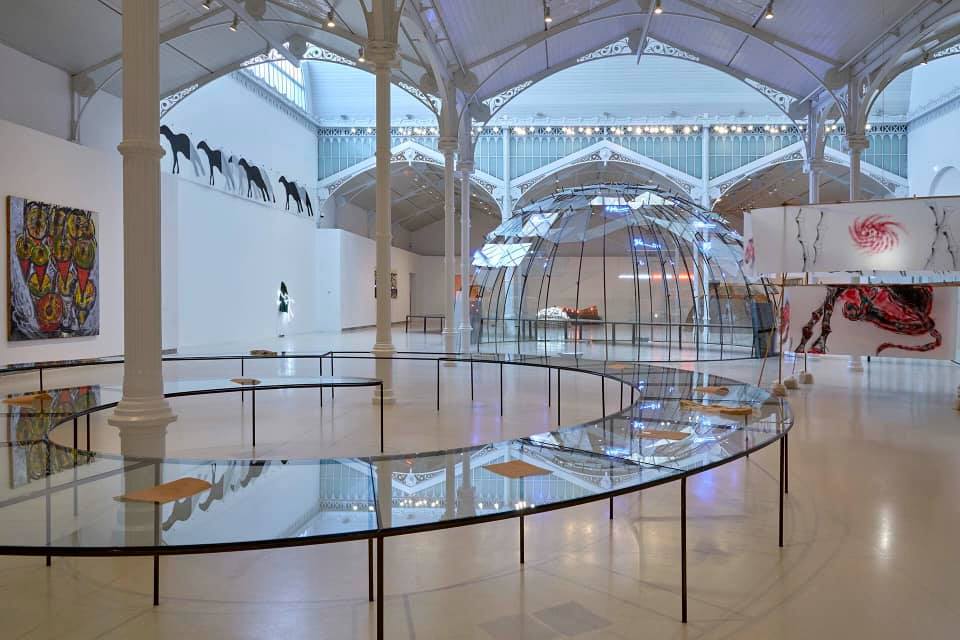 |
| The Merz Foundation |
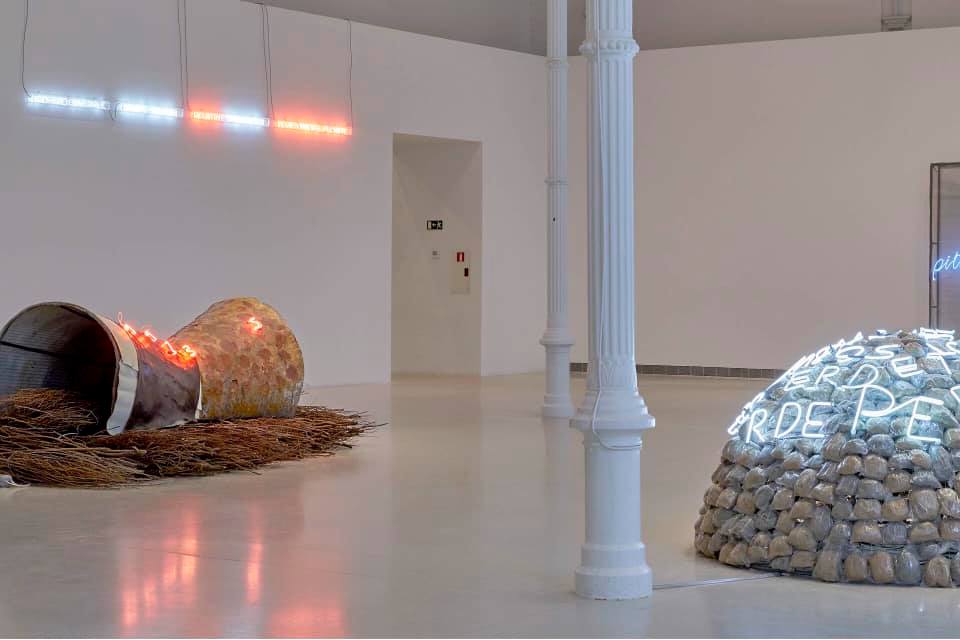 |
| The Merz Foundation |
Similar attitude is that of Genus Bononiae, a private entity that runs several museums in the center of Bologna (from Palazzo Fava to the Museum of the History of Bologna in Palazzo Pepoli, from the Santa Maria della Vita complex to Casa Saraceni). For Genus Bononiae, the pandemic has been somewhat troublesome, since it has continually postponed its flagship exhibition (one of the most anticipated of the year), The Rediscovery of a Masterpiece at Palazzo Fava, which once opened turned out to be one of the most interesting of this 2020, having brought back to Bologna the fragments of an extraordinary masterpiece by Francesco del Cossa and Ercole de’ Roberti, the Griffoni Polyptych (now scattered in museums around the world), and having packaged a high-quality itinerary around them. “Like everyone,” says Fabio Roversi-Monaco, president of Genus Bononiae, “we are suffering from the closure of museums justified in part by the health emergency, and we look with some concern to the future. Our museums, however, even with closed doors, have not stopped: we are working on planning for 2021, hoping that it can be the year of recovery, on the enhancement of the archives and the creation of quality online content that allows us to keep alive the dialogue with our public and that (to tell the truth) already during the first lockdown, have attracted new users.”
Genus Bononiae has also realized that one of the best strategies for responding to the virus is to innovate and experiment, including seeking solutions that combine online and sustainability. “Among the most important activities in this sense,” says Roversi-Monaco, "in a few days the virtual tour of the exhibition The rediscovery of a masterpiece will be online: an undertaking that was as exceptional and appreciated as it was unfortunate. We have reassembled after three hundred years the Griffoni Polyptych, gathering in Palazzo Fava all sixteen panels dispersed around the world. The result is an exhibition that has moved the interest of critics and art historians around the world, but which few have been able to enjoy, due to the closures imposed by the pandemic. The interactive tour, which will cost 5 , consists of a path through the entire exhibition with various tags that allow the visitor not only to listen to the narrative voice narrating the work and the artistic and cultural context in which it was created, but also to watch short videos that go into detail about the individual plates and their peculiarities, their critical description, curiosities and anecdotes about the figures represented. Finally, the high quality of digitization makes it possible to zoom in on the works without losing the slightest detail. The creation of a virtual visit, to be enjoyed in one’s own time and in the serenity of one’s own home (even if it can never equal the excitement of entering a museum) we believe is an important signal and we hope it will be appreciated by the public. Purchased and given away, even as a Christmas gift, it will also be a sign of attention to a sector, the cultural sector, that is in danger of being devastated in economic terms by this health crisis."
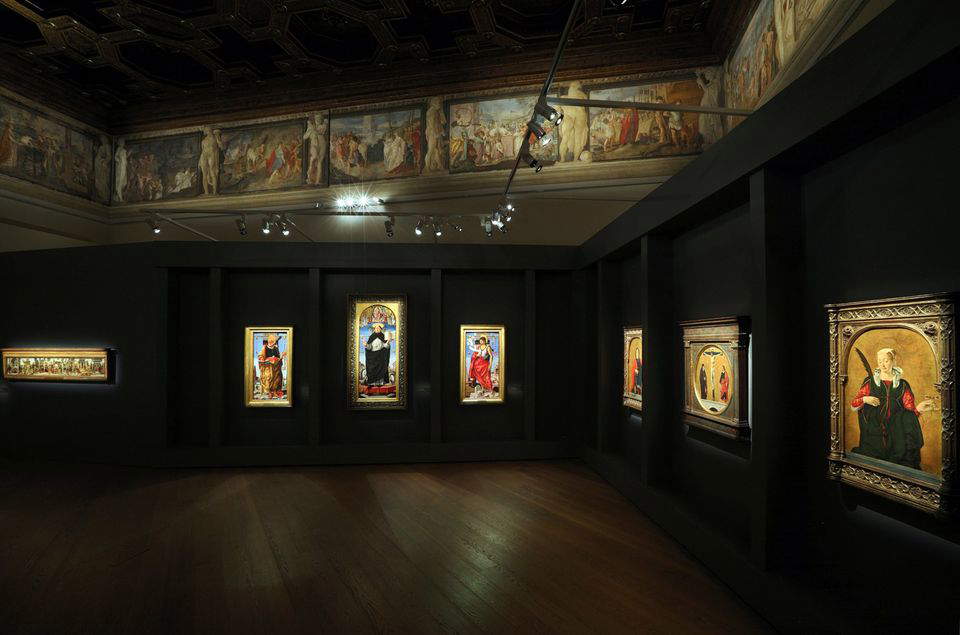 |
| A room of the exhibition The rediscovery of a masterpiece at Palazzo Fava |
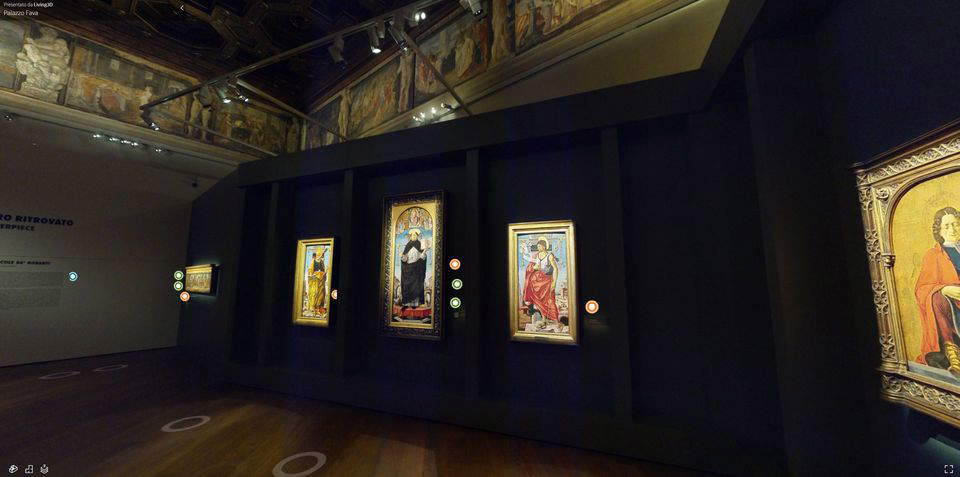 |
| A room of the exhibition The rediscovery of a masterpiece at Palazzo Fava |
 |
| Palazzo Pepoli, Museum of the History of Bologna, exhibition of 12 terracotta busts depicting famous women of our city who suffered prejudice and bullying, on the occasion of the International Day for the Elimination of Violence against Women |
Roversi-Monaco also gives insight into how much the crisis has weighed on museum budgets and what the risks of prolonged closure are. And those of the president of Genus Bononiae are bitter words: “The closure,” she lets it be known, “has meant for our museum circuit losses in revenues of more than a third of the budget. Therefore, it is implausible to imagine that the situation will remain unchanged after December 3: I see the government projected to attempt a reopening of economic activities in the run-up to Christmas, but few words have been spent to date on the reopening of the places of culture, downgraded to ’non-essential services,’ which citizens can serenely do without, despite the fact that all the necessary containment measures had already been taken after the first lockdown, to ensure visits with the utmost respect for health and safety. The silence is even more difficult to accept when one considers that the world of culture and museums employ thousands of people, move the economy and create ancillary industries. The risk is to plunge into the abyss an entire sector, which needs medium/long-term planning that (in such uncertainty) becomes extremely complicated to carry out. Obviously losing even the Christmas season receipts was and is a very hard blow.”
But what can happen next? It is also the task of museums to work out different exit strategies based on the most likely scenarios. That is what they are trying to do at Genus Bononiae, while still looking to the future even with a little confidence. “I think overall all museums will move their schedules forward by at least four months, hoping that in the spring the situation will turn for the better,” Roversi-Monaco concludes. “I also believe and hope that people will have a greater desire than ever to ’take back their lives,’ for beauty, travel (perhaps proximity) and escapism: art can take us to worlds far away. Clearly, the culture sector will need support and help if it is to continue to offer value. Even in a scenario that is as unprecedented as it is difficult, many players in the culture sector have reacted by conveying their traditional offerings in completely renewed forms: especially in the museum sphere, digital production, live broadcasts and ad hoc programs, accessible on demand, has been enormous. This shows that the sector wants to respond, but at the same time that the choices have to be really carefully thought through.”
One museum that typically relies heavily on the fall season is the Palazzo Blu in Pisa, the Pisa Foundation’s museum, which not only has a very fine permanent collection, but is also a highly regarded institution for its intense exhibition activity, focused mainly on early 20th-century art. And this year, too, everything was already ready for the fall exhibition, the one on De Chirico, then the news of the museums closing only four days before the opening of the show. “Palazzo Blu, while taking into account the restrictions caused by the health emergency,” Cosimo Bracci Torsi, chairman of the Culture Commission of Fondazione Pisa, explains to Finestre sull’Arte, "had planned, in compliance with safety conditions, its usual calendar of initiatives. The new closure, arranged in early November, therefore came just days after the opening of the photographic exhibition L’ Ultimo Novecento (The Last Twentieth Century), dedicated to the images of the twentieth century, taken from the Frassi archive, documenting the events of city life in Pisa in the last thirty years of the century, and, above all, it suspended the opening of De Chirico e la Metafisica the great exhibition that every year Palazzo Blu dedicates to twentieth-century painting, scheduled for November 7."
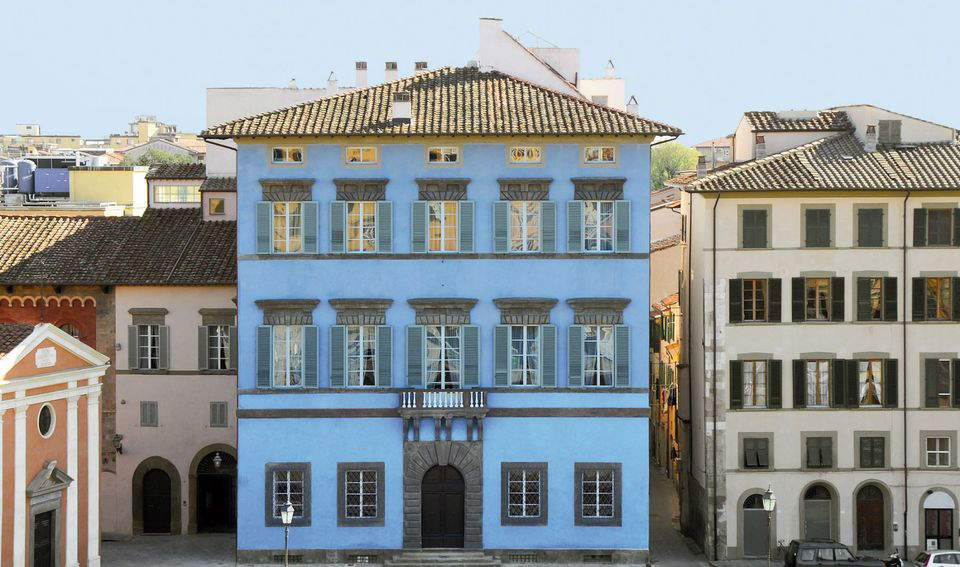 |
| Pisa, the facade of Palazzo Blu |
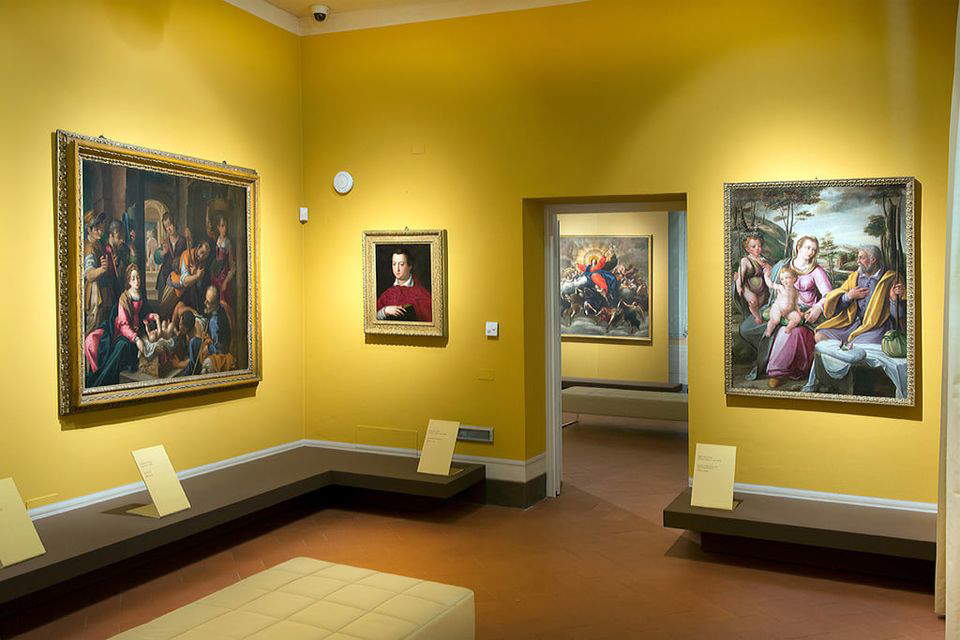 |
| The rooms of the permanent collection of Palazzo Blu |
 |
| The rooms of the permanent collection of Palazzo Blu |
Like many, Palazzo Blu is one of the museums that have been working hard to maintain constant contact with the public, a necessity for museums during these months of closure. "In this new lockdown,“ explains Bracci Torsi, ”we have taken steps, as we did last spring, to keep Palazzo Blu ’open’ with a series of digital events that present and tell the story on social media about the exhibitions that are not open for the moment, not to mention the works in the permanent collection and the cultural meetings in our auditorium. This is a way of promoting and disseminating cultural initiatives that has certainly had a formidable boost from the recent difficulties and will remain crucial even when we return to normalcy."
Instead, what are the plans for the months ahead? In Pisa, as everywhere else, uncertainty reigns: these are mainly sustainability problems that, according to the president, could become very serious in the long term if the museum does not take action soon to schedule reopenings. And there will be no difference between historic and famous museums and small museums, since the risks are for everyone. “It is very difficult and complicated right now to make predictions about the future,” Bracci Torsi concludes. “Just as complicated is the picture of the sustainability of the current situation for museums. The sector is composed of very different realities, between public and private institutions, large and small museums, not comparable to each other. As far as the public sector is concerned, much will depend on how much investment is wanted to sustain culture. In the case of private museums, if in the short term the closure, at least for some of them, may perhaps, not pose problems of sustainability, the prolongation of the situation we are going through will make everything more difficult and uncertain even for solid institutions with loyal audiences.”
Warning: the translation into English of the original Italian article was created using automatic tools. We undertake to review all articles, but we do not guarantee the total absence of inaccuracies in the translation due to the program. You can find the original by clicking on the ITA button. If you find any mistake,please contact us.